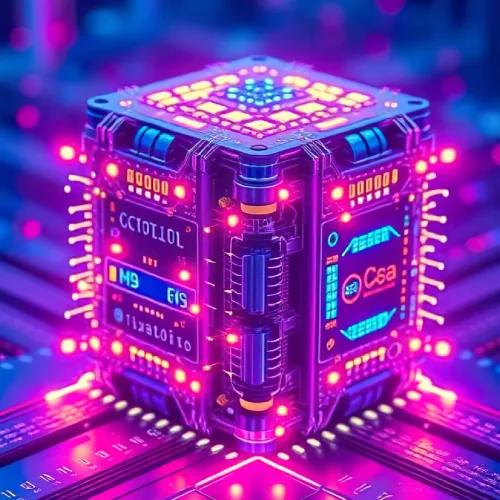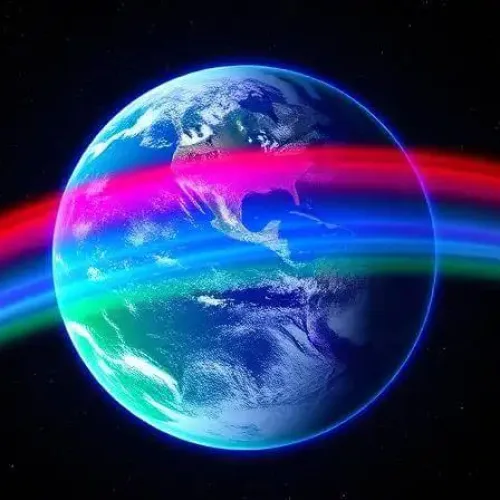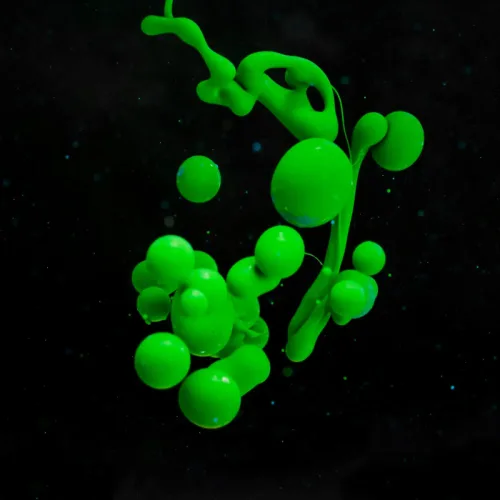Do you know that 85 percent of the whole universe is made of a material that does not exist? This is something that we cannot see, touch, feel, or understand through any form of instrumentation. For decades, scientists have been trying to understand what is keeping dark matter invisible. Dark matter continues not to be seen with the very own human naked eye. The gravity of galaxies seems to play a significant role in the overall structure of the universe. Clusters of galaxies also have a big influence. However, this does not mean that dark matter is solved by the new data. But how, can we crack the dark matter code at last? The answer may lie in one of the most ambitious scientific projects in history: CERN’s Future Circular Collider (FCC).
This new physics is going to push the boundaries of physics. With star activity, it will open new doors to understanding dark matter as we have never seen before. Of course, without being the key to solving the puzzle, it doesn’t make sense that it exists. How exactly does it work? We will examine the FCC’s ability to tell dark matter’s secrets.
The Need for a Future Circular Collider
Despite being a next generation particle accelerator, CERN’s Future Circular Collider will take scientific exploration further than ever before. Eventually, however, the FCC will be replaced by the Large Hadron Collider. When designed, it will operate at higher energies, and the particles will collide. The FCC will also get to operate in more controlled environments. Already it has made landmark discoveries with the LHC: the Higgs boson. The FCC’s capabilities, however, will be many times larger than LHC’s.
LHC vs. FCC Comparison Table
| Feature | LHC | FCC |
|---|---|---|
| Circumference | 27 km | 100 km |
| Energy Capacity | 14 TeV | 100 TeV |
| Primary Purpose | Discover Higgs Boson | Search for Dark Matter |
| Maximum Collision Energy | 13 TeV | 100 TeV |
| Potential Discoveries | Standard Model Particles | Dark Matter, New Physics |
To obtain much higher collision energy, the FCC will be designed. To probe new particles and forces, this is so essential. Important aspects of dark matter are these elements. The FCC will allow scientists to see particles created by collisions even at higher energies. Never before had these particles been accessible. Then it will explain phenomena that lie outside the reach of what we currently possess as accelerators.
What is the purpose of dark matter?
We have known for decades that ordinary matter accounts for about 15 percent of the universe. What is in this matter is the stuff that stars, planets, and everything else in the universe are made of. The rest is believed to be 85 percent of the matter in the universe by astrophysicists. We can’t see it directly with our current instrumentation. Despite this, and despite our lack of understanding, dark matter’s gravitational pull holds on to galaxies. Its movement is heavily affected by its influence. And this is why it’s important to our understanding of the cosmos.
The LHC is a current particle accelerator that has taken great leaps. But they are not strong enough yet to directly detect dark matter. Here, the FCC is now relevant. Moreover, the Future Circular Collider of the CERN delivers gigantic energy capacity. That will push the boundaries of exploration, scientists said. It also sets the scene for dark matter candidates to be found.
Progress in Dark Matter Research (LHC vs. FCC)
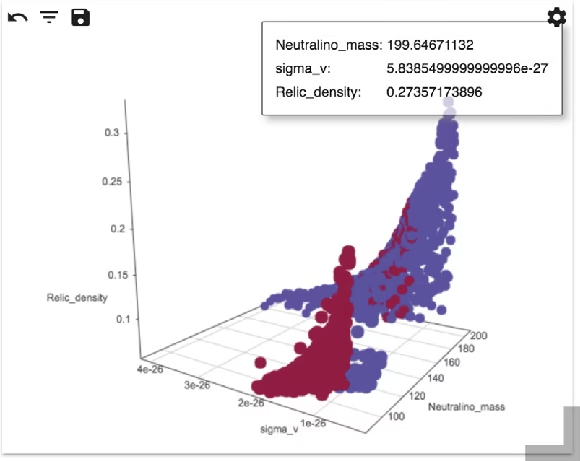
Understanding Dark Matter Through Particle Collisions
The FCC does indeed have an exciting ability. It can simulate and analyze particle collisions. But these happen at energies higher than ever before. So how are particle collisions used in the search for dark matter, really?
How Particle Colliders Work
These high-energy particle collisions occur at the heart of particle accelerators like the FCC. They are crucial to science. The idea is straightforward: They fasten particles to very high speeds, then collide them to make new particles. These collisions are similar to events in the early universe. They provide hints about what the fundamental materials of matter might be.
Then particles can collide, break apart, and reduce everything down to smaller components. They may be exotic and unknown to science. FCC has huge energy capacity available. It will do this on such a scale as has never before been imaginable. More knowns through more unknowns. For instance, particle history in high energy collisions could have produced WIMPs, or axions. Other dark matter candidates could also do the same. In less powerful accelerators, these are very hard to detect.
- Simple Infographic:
- Particles A and B are accelerated and collide.
- Energy released from collision creates new particles.
- Some of these particles might interact with dark matter.
Dark Matter Candidates and the FCC’s Role
Testing the most promising dark matter theories could be crucial for CERN’s Future Circular Collider. WIMPs particles that interact very weakly with ordinary matter but have mass are one leading candidate. The advanced detectors at the FCC would be able to see these particles after a high-energy collision.
The axion is also another possible candidate. A particle that explains some of the mysteries of particle physics and dark matter is much lighter. It’s hard to detect axions. But the FCC’s boosted energy increases the detection limits further. This had never been possible before with the LHC.
The famous case study is the Higgs boson. Until found in 2012, it took years of research and countless failed experiments. From this, the FCC might be the first to find dark matter. That missing part of the Standard Model, the last piece, was proven by the Higgs boson. In the same way, the FCC could present evidence for dark matter. However, this has the potential to confirm a role in the structure of the universe.
Pushing the Boundaries of Technology
The FCC is not just a faster, stronger accelerator: it also includes some of the most futuristic technologies in physics.
Advanced Technologies Behind the FCC

The development of the Future Circular Collider (FCC) is more than a case of simply increased size and energy. This is an engineering miracle, using technology to the limits to build the world’s most powerful particle accelerator. To do this, the FCC uses several advanced technologies, many of which have never been used at this size.
The superconducting magnet system found in one of the most impressive innovations in the CERN’s Future Circular Collider. Steering and focusing of the high-energy particle beams require these magnets. Superconducting magnets are different from traditional magnets; they have no electrical resistance. That means they can carry much higher current other than just heating as lost energy. This is crucial for the FCC. It has to produce intense magnetic fields. The particles move around in a circular way, mostly near light speeds, with these fields.
Superconducting magnets and cryogenics will both have an important role at the FCC. For the collider, superconducting magnets must be cooled to extremely low temperatures. These temperatures are closer to absolute zero than typical room temperature readings. Advanced cryogenic technology cools these magnets efficiently. This ensures no wasted energy. The effectiveness allows the collider to work. Ongoing innovation will be needed in this sophisticated cryogenic system. It must control the huge amount of energy and its own heat that is produced in collider operations.
Quote from CERN scientist:
“The technologies we are developing for the FCC are pushing the limits of engineering, and in many ways, they are taking us into uncharted territory.”
Data Analysis
Never before have particle accelerators produced so much data, a flood of data that dwarfs what CERN’s Future Circular Collider, the next new physics frontier, will generate. Scientists at CERN are not only pushing the limits of experimental physics, but they’re also leading the way in the cutting-edge convergence of data analysis. AI and machine learning are needed for the increased energy & complexity of the FCC. The way to process and analyze the mammoth datasets requires these technologies.
The amount of data produced by the LHC is currently around 25 petabytes a year. And the FCC will yield more, maybe as much as 100 petabytes a year. CERN is developing advanced data processing pipelines in order to manage this volume. Using artificial intelligence and machine learning, they are sorting through the noise. This does make some significant events stand out. And these algorithms will learn to identify patterns in the data. And they could spot the existence of dark matter. Another exotic particle, they could also detect.
- Data Analysis Steps:
- Collect particle collision data.
- Use AI algorithms to filter out irrelevant information.
- Identify potential dark matter signatures.
- Verify and confirm the findings with further experiments.
This use of AI and machine learning is not theoretical in practice. It is already in use today with the LHC. Working behind the scenes, AI helps the LHC and assist in discovering things. The FCC will have more and more advanced data processing tools as technology evolves. And these tools can quickly adapt to new challenges and new data requirements.
Potential Breakthroughs in Physics
Beyond dark matter, the FCC has the potential to advance our understanding of a wide range of physics topics.
Expanding the Standard Model

The Standard Model of particle physics has explained a lot to ourselves about the universe. But it falls short with many blanks. A search for new particles could be one of the things found by the Future Circular Collider at CERN. They could stretch or challenge the Standard Model. Specifically, in the case of dark matter. Seeing, for example, the dark matter particles would give you a new picture of. This would shine light on the mysterious mass that is invisible to us and makes up most of the universe.
For instance, we got the Higgs boson at the LHC. Completing the Standard Model, this discovery was. It explained how mass is perverted from particles. Just as the FCC may disclose new particles or forces that would lead to profound changes in the field of physics, generally.
Implications Beyond Dark Matter
Unlike dark matter, though, the FCC’s research could well have broader impacts. The collider could reveal why there is little antimatter. It is extremely rare, but it’s a form of matter that mirrors ordinary matter. The machine could also help us understand dark energy, the ill-understood force that is speeding up the expansion of the universe.
The FCC may also present evidence of extra dimensions. Such a notion could significantly change the way in which we shape an idea of the structure of the cosmos. Discoveries through exploring these phenomena could open new doors to how we understand what makes our universe tick.
Challenges and Controversies
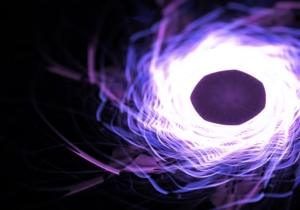
Construction and running the FCC is by no means easy technically or philosophically.
Technical and Financial Hurdles
Many challenges characterize a very ambitious enterprise: the FCC. It’s an enormous scientific potential but hampered by technical and financial roadblocks of construction and use.
Construction Scale
The FCC will be the largest and most complex particle collider ever to be built. Far bigger than the Large Hadron Collider (LHC), its ring will circle over 100 kilometers. Such an immense structure is too big to build simply; you need a tremendous amount of engineering and coordination with specialized scientific and technological fields.
Real-world example
Think of constructing big scale infrastructure projects such as bridges or tunnels. However, the engineering challenges are great and include problems related to soil stability, transportation logistics, and, of course, meeting safety standards. The FCC will have the challenges in a much bigger, more technologically complicated world.
High Energy Requirements
To achieve the required speeds, the emissions emitted by the FCC would need to be accelerated by an unprecedented amount of energy. To meet this energy demand, new solutions will be needed to ensure it is done sustainably.
Statistic
The LHC currently consumes about 120 megawatts of power, whereas the FCC’s power consumption could be as much as double that amount. This power should be provided without relying on fossil fuels as a critical challenge to environmental sustainability.
Cost
Building and operating the FCC is estimated to cost $10–20 billion. This includes construction costs, research costs, staffing costs, and maintenance costs. While this is a fraction of the cost of things like the ITER nuclear fusion reactor, it’s still a very significant amount of money.
Data
However, the CERN council is actively seeking international collaboration on sharing the cost burden, and estimates are that it will take almost a decade to get the funding and build the collider.
Timeline
Construction won’t kick off until the mid-2030s, and the FCC itself is still in the planning phase. As the project was so large, it will potentially take another 10 to 15 years to finish.
However, the investment required to accomplish these discoveries pales in comparison to any potential discoveries from the FCC. But the costs and benefits need to be balanced out, and it continues. And it’ll happen within the scientific community and in government agencies that are funding the project.
Conclusion
The Future Circular Collider to be built at CERN is a truly revolutionary step in understanding the universe. It may now be just over the horizon at CERN. We are, and it is about to enter and show us what dark matter is. The next big logical step in our quest for understanding is the FCC. It is on the edge of particle physics. It also inspires the world with collaboration around the globe.
We are moving toward this new era of discovery. Remember:
“With the FCC, we may finally glimpse the invisible threads that bind the cosmos together.”
Get the latest on breakthroughs at CERN, and support scientific exploration, through education and advocacy.

